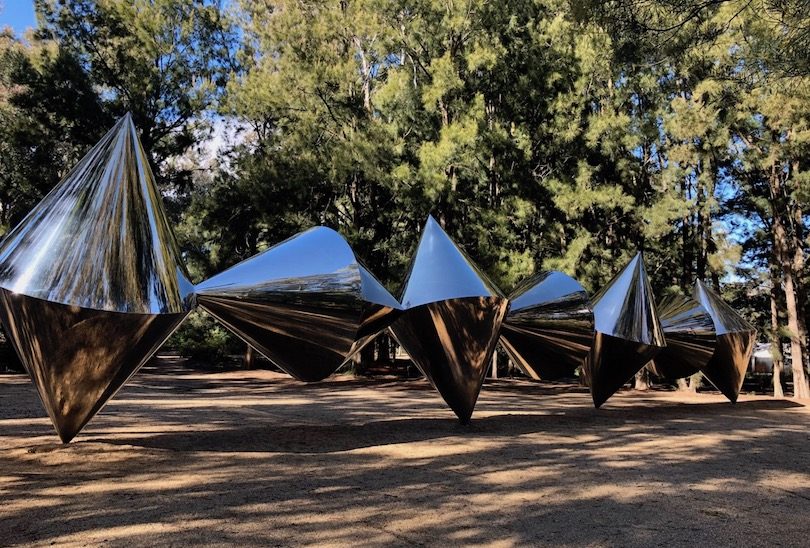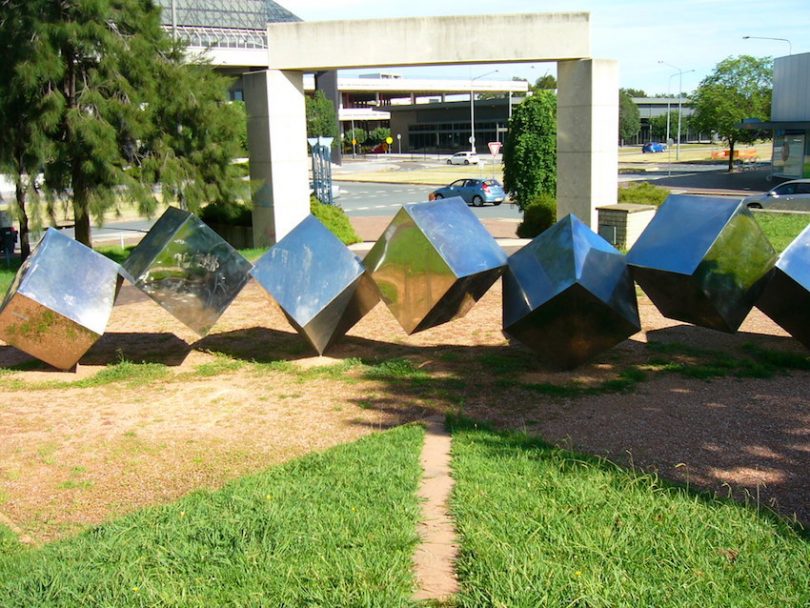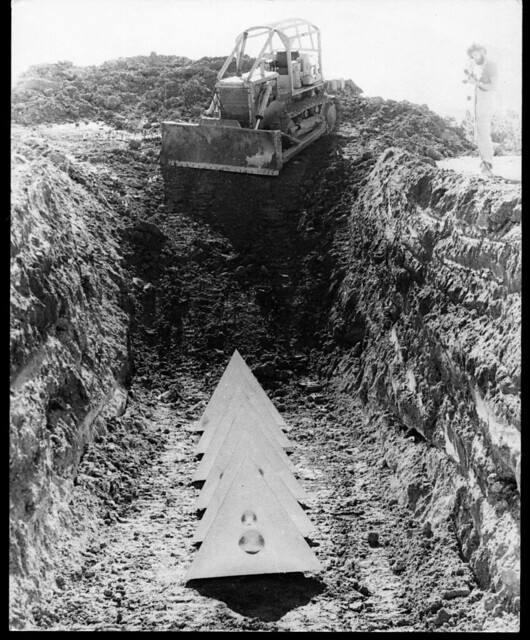
Bert Flugelman, Cones, Sculpture Garden, National Gallery of Australia. Photo: Marg Wade, Canberra Secrets Personalised Tours.
The skillfully created sculpture Cones in the National Gallery Sculpture Garden reflects the environment nearby and the distinctive style of its creator Bert Flugelman. Austrian-born Flugelman has left his mark in Canberra and beyond, both above and below ground.
Wander past this 20-metre stainless-steel geometrical sculpture any weekend and you will witness antics of visitors, especially children, enthusing over their reflections and the distortions in the sculpture’s mirror-surface. This is just what the sculptor envisaged.
Flugelman’s distinctive work can be seen throughout Canberra. His earliest work in Canberra, in 1966, is a welded copper and mosaic fountain in front of Bruce Hall at the Australian National University.

Bert Flugelman water sculpture outside Bruce Hall, ANU. Photo: Archives ACT.
Near the main entrance of Belconnen’s Margaret Timpson Park stands another of Flugelman’s highly-polished stainless-steel sculptures. Tumbling Cubes was originally made for Cameron Offices, the first major building in Belconnen in the 1970s.
Flugelman was none-too-happy when his work was moved from Cameron Offices into the park adjacent to Belconnen Mall. He felt it was “put in the worst possible spot”. He stated that he wanted it destroyed and taken away.
It’s good that it remained. It’s a welcome sight in the park as the light bounces off it, and it did look particularly lovely set within the gardens as part of last year’s Floriade Reimagined.

Bert Flugelman, Tumbling Cubes, Margaret Timpson Park, Belconnen. Photo: Archives ACT.
A quirky artist, in 1975, Flugelman crafted something significant, which isn’t visible today. A polished aluminium sculpture of six tetrahedrons was created as part of the one-off ‘Sculpture ‘75’ exhibition, part of the Australia ’75 Festival of Creative Arts and Science.
This was in the Whitlam era, a time for creative expression and artistic opportunities. The exhibition included displays and activities around Canberra such as Sidney Nolan’s works at Lanyon, audiovisual displays using exciting new computer technology, art and craft workshops, street opera, film festivals and music concerts. It also included 30 major sculptural works of varying mediums erected in Commonwealth Gardens as it too was simultaneously being constructed.
Flugelman’s sculpture, integral in the ‘Earthworks’ component of the program, consisting of six large polished aluminium tetrahedrons, was literally given to the earth. A large trench 4.5 metres deep was dug by earthmoving equipment. The sculpture was then buried in the new park.
Flugelman was reputed as saying that if he told people why he buried his artwork, “the whole point would be lost”. He also stated that he wanted people to “imagine what is under their feet and dwell upon the artistic merit of how they were interred”.
The Canberra Times wrote at the time: “Let the scoffers depart to their conventional galleries and other established sites for visual sculpture. But let those with imagination spend creative hours gazing at the bulldozed earth in Commonwealth Gardens. Given only the slightest prompting they can begin to imagine the $10,000 the sculptor, Mr Flugelman, says his works are worth.”
Today a small plaque behind Stage 88 acknowledges the buried artwork and the public interest this caused at the time.

Bert Flugelman sculpture of six large polished aluminium tetrahedrons about to be buried in Commonwealth Park in 1975. Photo: Archives ACT.
Flugelman’s artworks (many with nicknames) are also enjoyed in other cities, including two large spheres in Adelaide’s Rundle Mall, known as ‘Bert’s balls’, Sydney’s Pyramid tower referred to as the “silver shish kebab”, and Wollongong’s Gateway to Mount Keira, nicknamed the “toaster element” or the “wave”.
Also in Wollongong is Flugelman’s Winged Figure, acknowledging early flight in the area. This work is featured with Flugelman in the 1985 Archibald prize-winning work Flugelman with Wingman by Guy Warren. Flugelman died in 2013. But we can continue to reflect on his large stainless-steel works, particularly those that we can see above the ground.












